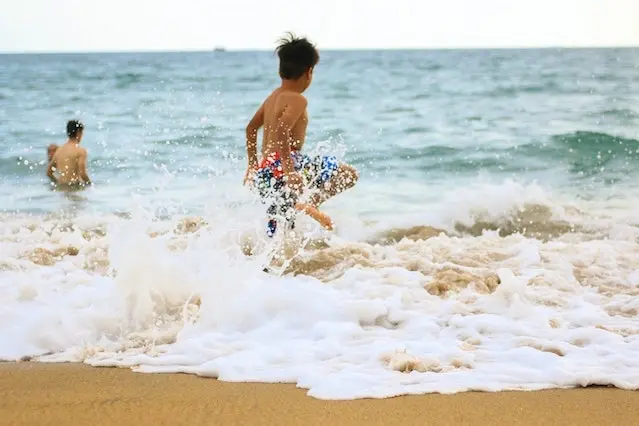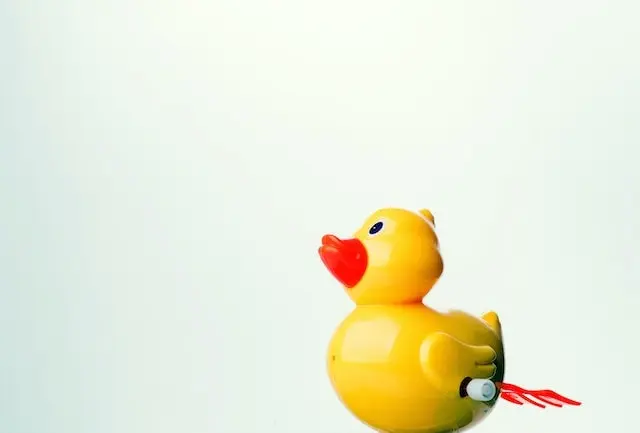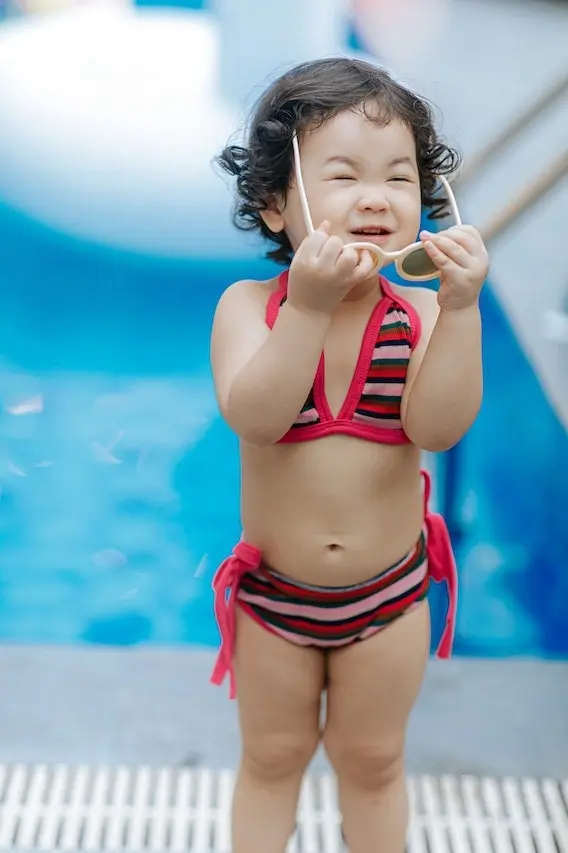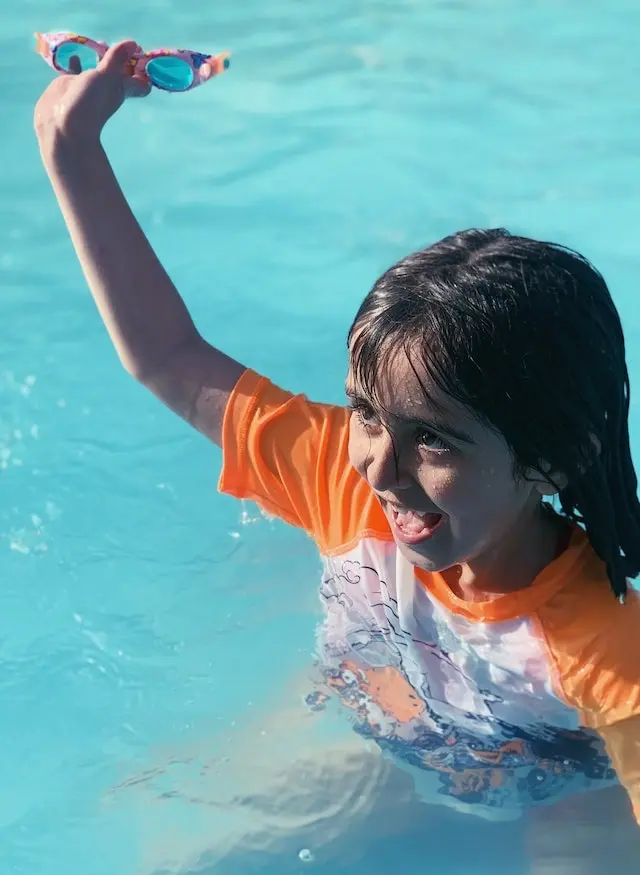10 Vital Water Safety Tips to Protect Your Precious Baby

When it comes to your baby. Water safety is crucial. Their well-being is important in every aspect of their lives, as well as around water. Babies are naturally curious, and water can be a fascinating yet potentially dangerous attraction. Whether it’s bath time, pool time, or any other water-related activity, it’s crucial to be familiar with water safety for babies. This extensive guide will answer ten essential questions to guarantee your baby’s safety around water.
Table of Contents
Why is water safety paramount for babies?
Water safety for babies is paramount because even a few inches of water can pose a drowning risk. Babies lack the physical ability and coordination to keep themselves safe in water, making them highly at risk. Drowning is one of the leading causes of accidental death in infants, making it crucial to prioritize.

What is the best age to introduce babies to water?
Introducing babies to water can begin as early as a few months old. Many parents start with gentle activities such as baby baths or gentle water play in a controlled environment. The key is to introduce your baby to water gradually, ensuring they are comfortable and confident at every step.
How can parents make bath time safe and enjoyable?
Bath time can be a delightful experience for both you and your baby while also teaching them about water. To make bath time safe and enjoyable.
- Always stay within arm’s reach of your baby.
- keep a cozy water temperature.
- Use non-slip mats or cushions in the tub.
- Keep bathtime toys clean and free of mould.
- Create a calm routine to help your baby relax.
What safety precautions should parents take during bathtime?
Bath time may seem like a routine activity. But it needs careful awareness of safety. Here are some important safety precautions to take during bath time:
- Constant supervision: Never leave your baby neglected in the bath, even for a moment. Babies can slip or become submerged very quickly. And can lead to potential danger.
- water temperature: Make sure that the water temperature is safe and comfortable for your baby. The perfect bath water temperature is around 100°F. Use a bath thermometer to check the water’s temperature. And try to never make it too hot or too cold.
- Depth of water: Keep the water level shallow. It should be just a few inches deep. This decreases the risk of accidental submersion.
- Protect your baby: Hold your baby carefully while bathing. Especially if they are not yet able to sit up independently. Use a non-slip mat or cushion in the tub to prevent slipping.
- Gather supplies: Before starting the bath, gather all necessary supplies( soap, shampoo, towel, dry clothes) within arm’s reach to avoid leaving your baby alone in the water.
- Never Rush: Bath time is not a race. Take your time and enjoy this bonding experience with your little bundle of joy. Rushing can lead to accidents.
How can parents child-proof their homes for water safety?

Childproofing your home for water safety is a practice measure that can prevent accidents. Here are the essential steps to childproofing your home:
- Install safety gates: Use safety gates to block access to areas with water sources. Such as swimming pools, bathtubs, or bathrooms. Make sure these gates are closed and childproof.
- Toilet locks: Install locks on toilet lids to stop babies from reaching into the water. Babies can fall head-first into toilets and are unable to free themselves.
- Fix bathtubs: Use nonslip mats or cushions in the bathtub to stop slipping. Never leave your baby alone in the bathtub, even for a moment.
- Lock away cleaning products: Store cleaning products, especially those that contain chemicals. Put them in a locked cabinet. Babies may be interested in brightly coloured bottles, but they should never have access to possibly harmful stuff.
- Empty containers: Empty containers that can collect water, such as buckets and basins, right away after use. Even a small amount of water can pose a growing risk to a curious baby.
- Educate carers: Make sure that anyone who cares for your baby is aware of water safety protocols and knows how to perform CPR. This includes babysitters, family members, and childcare providers.
How can parents teach their babies basic water safety skills?
Teaching your baby basic water safety skills is essential for their protection. Here are some steps to consider:

- Enrol in baby swim classes: Baby swim classes are sometimes available at local pools or community centers. They can provide a structured and safe environment for teaching basic water safety skills. Your baby will learn some life-saving skills in this swim class.
- Practice Floating: Cheer your baby to float on their back with support. Hold them gently under their neck and back while allowing their legs and arms to float naturally.
- Blow bubbles: Teach your baby to blow bubbles in the water. This not only introduces them to the concept of breath control but also helps them become more comfortable in the water.
- Moderate submersions: Gradually introduce your baby to submersions in a controlled and supportive manner. Gradually increase the depth and duration as your baby becomes more confident.
- Repetition and consistency: Steady practice is key to fortifying these skills. Frequent exposure to water in a positive and supportive environment can help your baby become more water-confident over time.
What should parents do if their baby accidentally falls into the water?
Accidents can happen, even with the most vigilant supervision. If your baby accidentally falls into water, follow these steps:
- Stay calm & positive: It’s very important to stay calm and focused to provide the best possible assistance to your baby.
- Retrieve Your Baby: Quickly and gently recover your baby from the water as soon as possible. Every second is valuable.
- Support the Head and Neck: Make sure you are supporting your baby’s head and neck as you lift them out of the water.
- Check For breathing: Check if your baby is breathing. If not, initiate CPR immediately. If you are not trained in CPR, call 911 and follow their instructions.
- Hold gently: Hold them gently so that they can get the air in and out. Pay attention to their mouth and nose.
- Seek Medical Attention: Even if your baby seems fine, seek immediate medical attention. It’s crucial to ensure there are no hidden wounds or issues.
What are the best practices for using baby floats and inflatable devices?
Baby floats and inflatable devices can provide some support in the water, but they should be used with coution. Here are some best practices:
- Choose Age-Appropriate Devices: Select devices correctly designed for your baby’s age and weight. Always follow the manufacturer’s guidelines.
- Supervise closely: Never leave your baby alone in a float or inflatable device. These are not a substitute for supervision.
- Check for safety features: Make sure the device has safety features such as leg holes that are snug to stop your baby from slipping through.
- Test in shallow water: Before using a float or inflatable in deeper water, test it in a shallow and controlled environment to ensure stability.
- Avoid fast-flowing water: Do not use these devices in fast-flowing water bodies. Stick to calm and controlled water environments.
- Keep a Hand On: Even with a flat or inflatable, keep a hand on your baby for added security and support.
How can parents help their babies overcome their fear of water?
Some babies may develop a fear of water. Here’s how parents can help them overcome it:
- Gradual Exposure: Gradually reintroduce your baby to water in a calm and controlled environment. Start with shallow water and activities they enjoy.
- Positive Associations: Make water-related activities enjoyable and positive. Play games, sing songs, and use toys to create a fun and engaging experience.
- Stay calm: Your demeanour plays a significant role. Stay calm and relaxed, as babies can pick up on your emotions.
- Gentle support: Provide gentle physical support to help your baby feel secure in the water. Holding them close can offer reassurance.
- Be patient: Overcoming a fear of water may take time. Be patient and allow your baby to progress at their own pace.
What resources are available for parents to learn more about baby water safety?
Parents can access several resources to learn more about water safety for babies, including:
- Local swim centers: Many local swim centers offer baby swim classes and water safety courses.
- Online guides: Many websites and online forums provide precious item information and tips on water safety for babies.
- Parenting books: Look for parenting books that include sections on baby water safety.
- Red Cross: The American Red Cross offers courses in water safety and CPR, Which can be invaluable for parents.
- Pediatrician: Your child’s pediatrician can provide advice on water safety and may recommend local sources.
Conclusion:
Water safety for babies is a paramount concern that demands careful attention and education. By understanding the risk, taking preventative measures, and gradually introducing your baby to water, you can create a safe and enjoyable experience for your little one. Remember that consultant supervision is key, and learning CPR is a valuable skill for any parent. With these precautions and knowledge in place, you can confidently enjoy water activities with your precious baby.

What temperature should the water be for a baby’s swim lesson?
The recommended water temperature for baby swim lessons is usually around 90°F (32°C). This warmth helps babies stay comfortable and relaxed during their lessons. Always check with the swim instructor for the ideal temperature.
How can I help my baby overcome a fear of water?
To help your baby overcome a fear of water, gradually reintroduce them to water in a controlled environment, maintain a positive and calm demeanour, provide gentle support, and be patient as they build confidence at their own pace.



